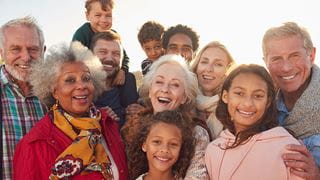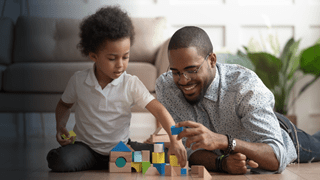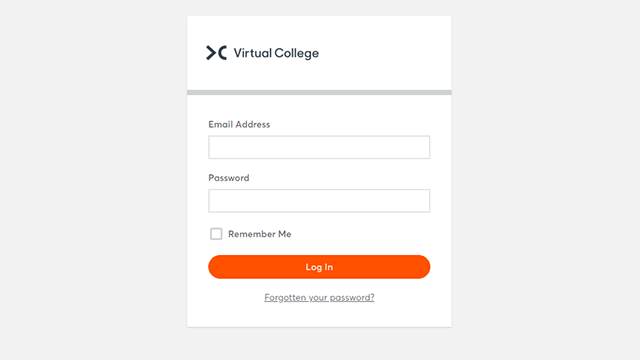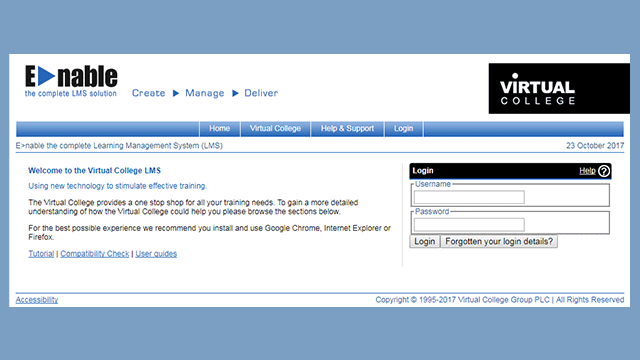Child Abuse: What is it?
Child Abuse: What is it?
According to analysis by the NSPCC, an estimated half a million children suffer from child abuse every year in the UK. This abuse may not always be noticed or reported, and the impact of the behaviour can affect someone for the rest of their life.
When it comes to safeguarding children, one of the first steps is to understand exactly what constitutes child abuse, both from a wellbeing aspect and from a legal point of view. In this article, we explain what child abuse is, the signs and symptoms of child abuse, the impact it can have and how you can report it.
What is Child Abuse?
Child abuse is classed as the harm of or failure to take care of anyone under eighteen. It is done deliberately and may be perpetuated by an adult or another child.
What Are the Different Types of Abuse?
There are many ways in which a child can be abused, either through the action of being harmed or having something withheld which causes harm. Types of child abuse can generally be divided into four different categories: neglect, emotional abuse, physical abuse and sexual abuse.
- Neglect
Neglect is when a child’s basic physical and mental needs are not being adequately met by their guardian or parent. This includes such neglect as not providing enough shelter or food, failing to adequately supervise the child or failing to protect the child from danger.
- Emotional Abuse
Emotional or psychological abuse is when someone acts in a way towards a child that might damage their emotional state or development. This can include withholding affection, unfair punishment, insulting the child or keeping the child in a state of fear.
- Physical Abuse
Physical abuse occurs when an adult causes physical pain and harm to a child, such as hitting, slapping, pinching or burning them. This physical abuse may be carried out as a punishment or simply as a means for the adult to take out their anger and frustration.
- Sexual Abuse
Sexual abuse is when an adult forces a child to take part in sexual activities, either with the adult or with other people. This can include inappropriate physical contact, using the child for prostitution or online sexual activity with a child.
Domestic abuse can also be included as a form of child abuse, since a child witnessing domestic abuse can result in long-term emotional issues which can affect them later in adulthood.
The list of ways a child can be abused is non-exhaustive. If you’re wondering whether a child is being abused, the best resource for determining whether an act constitutes abuse can be found on the NSPCC website.
What are the Signs and Symptoms of Child Abuse?
Knowing how to recognise signs of abuse is the first, and most important, step in safeguarding children. The different types of abuse in children have different warning signs, so we’ve broken them down into the four main categories below.
Physical Abuse
Physical abuse is one of the most straightforward types of child abuse to notice, as it often leaves visible marks on the victim. Difficulties can arise when the abused child tries to hide their injuries, or they or their caregiver says that the injuries were caused by an accident, but the following symptoms of physical abuse indicate that something serious might be going on:
- Bruises, burns, bite marks, grazes and scratches
- Bumps, particularly on the head
- Scarring from unexplained injuries
- Physical problems caused by poisoning, like stomach upsets, seizures or breathing problems
In babies or very young children, head injuries might not be visible but may be present if the child is very sleepy, acts irritably, doesn’t want to feed, falls unconscious, has seizures or is struggling to breathe.
Emotional Abuse
Emotional abuse can be very tricky to identify, as the signs of an emotionally abusive parent or caregiver can often be mistaken as being caused by something else. It can take many forms, often starting as small remarks and then building to more targeted abuse, which means that the signs can be varied.
Here are some of the most common indicators of emotional abuse in children:
- Lacking self-assurance and self-confidence
- Anxiety
- Struggling to control their emotions
- Failing to build and maintain healthy social relationships
- Treating other children in an emotionally abusive way; teasing, mocking, manipulating
- Using cruel language that is unexpected for their age
- Having a strained or distant relationship with a parent
- Appearing overly wary of punishment or consequences
- Apologising unnecessarily
Sexual Abuse
Sexual abuse can happen to children of any age, regardless of whether they are over the age of consent. This can make determining whether sexual abuse has occurred quite difficult, as some children may not have the vocabulary to explain what has happened or even understand what was wrong.
Here are some of the common signs of sexual abuse in children and young people:
- Anxiety or depression
- Clinginess
- Acting more withdrawn or distracted
- Getting increasingly upset for no obvious reason
- Experiencing nightmares and sleeping badly
- Acting inappropriately or talking about topics that are inappropriate for their age
- Feeling unwell without an obvious physical cause
- Is unwilling to get changed in front of others
- Has trouble walking or sitting down
- Experiencing genital pain, discomfort or symptoms of STIs/UTIs
Neglect
If a child is being neglected, some or all of their basic needs are not being met by their caregiver. The signs and symptoms of neglect can begin to appear very slowly, but if the neglect continues then these signs will likely become more obvious over time.
Some of the main signs of neglect are:
- Poor personal hygiene
- A dirty or unkempt appearance
- Being underweight
- Appearing very hungry
- Having growth issues
- Regularly getting ill
- Having untreated health issues
- Missing medical appointments or vaccinations
- Being left alone in the house
- Having to care for younger siblings or other family members
- Missing school
- Appearing anxious, depressed, distracted and withdrawn
What Effect Does Child Abuse Have on Children?
Child abuse can often have significant negative effects on the development of a child, as well as their adult life in the future. Beyond the physical impact of physical abuse, neglect and sexual abuse, there are a host of other psychological issues from all forms of abuse which might not be immediately obvious.
Numerous studies, including the UK’s largest from the NSPCC, have identified a clear link between children experiencing different forms of abuse and also suffering from poor emotional wellbeing. This can include a host of mental health problems such as PTSD, depression, anxiety and bipolar disorder which can last long into later life, each bringing their own problems and making it harder for abuse victims to deal with stressful situations.
Abuse can also harm children’s ability to form relationships with others, leading them to become isolated from society and restricting them from pursuing relationships. Without healthy examples of relationships during childhood, victims may find it harder to build and sustain healthy relationships themselves.
Additionally, there are strong links between child abuse, substance abuse and criminal behaviour, which can lead abuse victims into a series of vicious cycles which can reoccur throughout their lives.
Safeguarding and Child Abuse
Safeguarding is an integral element in the prevention of child abuse. It begins with those who work with children in a professional scope, whose training and understanding can prevent child abuse as it happens and who understand the official procedures in place which mean intervention can happen as quickly as possible.
Recognising the signs of abuse, knowing which actions to take and understanding the legal framework around child abuse are all important steps in preventing situations and incidents. If you work in an industry like education, healthcare or social care and interact with children and young people regularly, you need to be aware of the signs and symptoms of abuse so that you can protect the children that may be at risk of harm.
However, even those without an official safeguarding responsibility can witness the signs of recognised types of abuse or may be told that abuse is taking place. Therefore, it’s useful for everyone to understand the signs and indicators of abuse and know how to report their concerns.
If you’re looking for safeguarding training that can help you understand the different types of child abuse and how to recognise signs of parental abuse, we offer a range of comprehensive safeguarding courses for all levels.
Where to Report Child Abuse
If you suspect that a child is being abused, or a child tells you that they are experiencing abuse, you must report it. Here are the steps you need to follow.
Firstly, remember that if you think a child is in immediate danger, you are advised to call the police and explain the situation. This approach is necessary if you believe a child will be physically harmed, may be taken away by an adult or is at imminent risk of FGM.
In the majority of cases, suspected child abuse should be reported to your local social services. You can either go straight to your local contact, or inform the designated safeguarding lead if you work somewhere like a school, who will take the concern to social services for you.
You can also contact the NSPCC if you’re worried about a child or think that someone might be experiencing abuse, but don’t know how to act. Depending on the situation, you may be advised on the next steps to take or your concern may be handled by someone working for the charity.
FAQs
What is the most common form of child abuse?
According to the NSPCC, the most common form of child abuse is neglect. Anyone can suffer from neglect, but because many children are unable to meet their own basic needs the impact of neglect can be much more severe, with longer-lasting consequences.
What happens after child abuse is reported?
After child abuse has been reported, an investigation will usually be launched to determine the severity of the situation and who it has impacted. Local social services, and any other relevant agencies, will then decide what action needs to be taken, which usually revolves around whether the child should be taken away from their caregivers and home.
Who do teachers report child abuse to?
Teachers usually report concerns about child abuse to their school’s designated safeguarding lead, who will then speak to local social services to start an investigation. Teachers may also go directly to social services themselves, and in serious or urgent cases will report suspected child abuse straight to the police.
Summary
Cases of child abuse are prevalent throughout the UK, and whilst estimations are made about how many young people suffer childhood abuse, it’s likely that plenty of cases never go discovered or reported. It’s incredibly important to be aware of the signs of child abuse and to report or discuss your concerns, even if you’re unsure whether anything is going on. Your actions could make a massive difference to a child’s life and wellbeing, so it is always best to act in order to try and protect them.
If you’re looking to learn more about child abuse and how you can prevent it, we offer online courses in Level 2 Safeguarding Children and Safeguarding Children Level 3 as well as other safeguarding courses on specific topics.





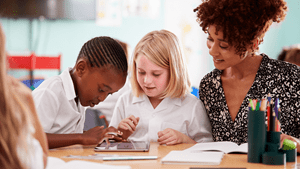


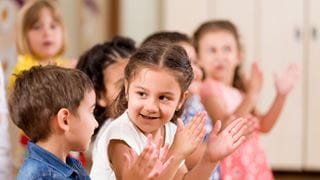
/safer-recruitment.jpg?mw=320&hash=A2BB5E144C89C295EC10C63680F69F39C4C3E566)


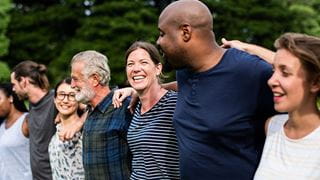

/e-safety-.jpg?mw=320&hash=A9FCF6B70F32AD3EA74633373FF0213B000F75FF)













